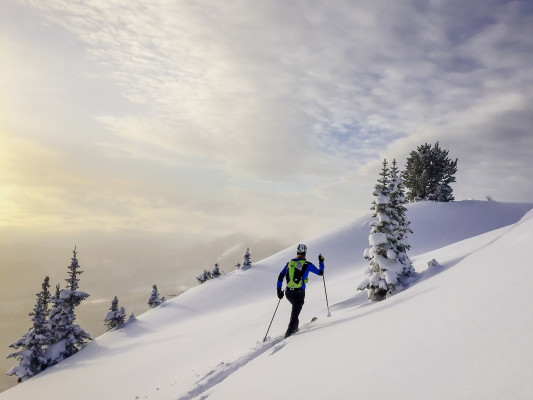1/21/2021 Kids Ski Touring Gear
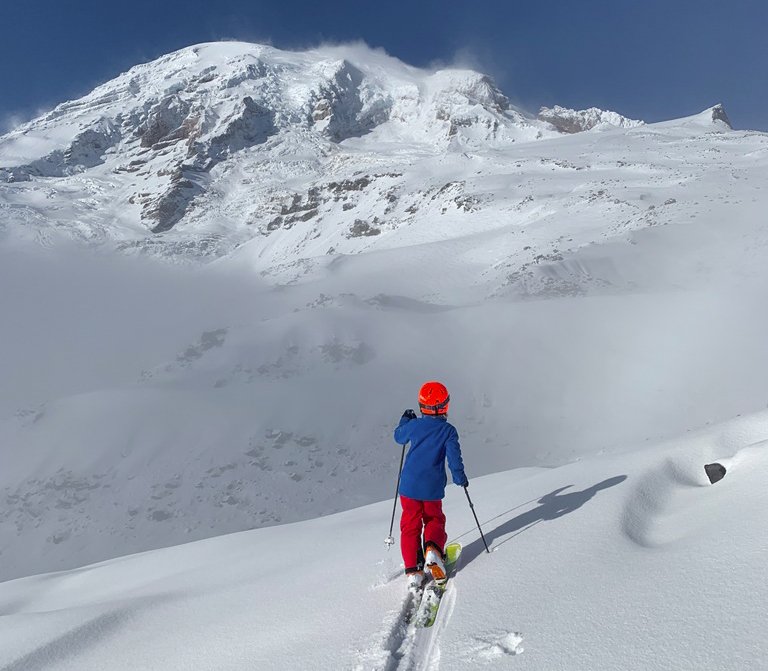
Perhaps in an effort to combine the joys of ski touring with child rearing, some parents start their kids on a ski touring journey at an extremely young age. The first steps are usually carrying their kids in a backpack on easy tours and then graduate to pulling them uphill with a rope tied to themselves as they skin (so much for fast and light!). However, as children hit growth spurts and become noticeably heavier, these tactics become near impossible.
Eventually, it’s time to get the little ones their very own touring gear! More and more kids are skinning uphill by themselves, and the equipment is finally starting to catch up to the trend.
Let’s take a look at the options available so you can shave 30+ pounds off your back!
Junior Touring Boots
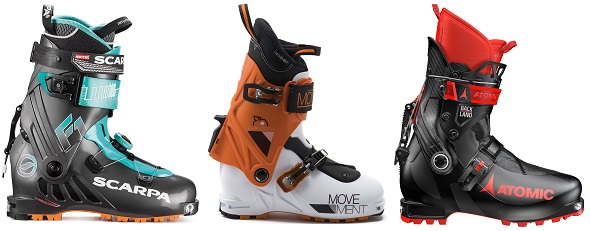
Finding an alpine touring ski boot for kids is the biggest challenge for parents. Obviously fit is important, but also the boots you end up with will determine what binding system you need. The smallest boot available with tech fittings is the much-adored SCARPA F1 Women’s boot, which goes down to size 21.5 mondo (approximately 3.5 in men’s shoe sizing, or 4.5 in women’s). The price isn’t particularly friendly for growing feet, but the F1s provide a high-performance option for good skiers.
Movement has introduced the aptly-named Explorer Junior touring boot with a very friendly price. It’s an excellent option as it features good range of motion while skinning and decent downhill ski performance. Sizing starts at 22.5 mondo which is approximately a men’s size 4.5 shoe. The Explorer boots are very simple to use and will fit a lot of youngins!
For feet smaller than size 21.5 mondo though, parents need to look for the Contour Kids Touring Adapter. The adapter will work nicely with your kiddo’s existing resort set up since it snaps into an alpine binding, essentially creating a freeheel touring binding. Simply remove it when they’re ready for downhill action and use the skis just like they would at the resort. Your kids can thus use the same skis in the resort and for touring!
As expected, the downsides to this approach are that it is heavy and won’t walk well. That said, you could look at it as a way to condition your kids since they may end up with gear even heavier than yours! If they start on this route, they will really appreciate the touring-specific gear once they grow into them. You’ll probably appreciate the cost savings too!
Backcountry Bindings for Kids
Assuming your kiddo can fit in a touring boot, you’ll then need to find a tech binding that is suitable for them. The benefit of tech bindings is that they are much more efficient when skinning uphill so kids will be able to enjoy longer days before tiring. The drawback is that the release values for tech bindings have historically been limited to 4 or higher on the DIN scale. This is too high for smaller kids.
We suggest the Dynafit Rotation 7 as it can adjust down to just 2.5 release value, both laterally and vertically. It is uniquely qualified for lightweight skiers as the toe piece is built on a rotating plate that allows for smooth lateral release.
Once a skier charts at a 3 or above, you can start looking at more standard tech bindings with low release values such as the Hagan Pure 8 and the G3 Zed 9. These go down to a 3 for both lateral and vertical release, and are lighter than the Rotation 7 by around 500 grams. All three bindings will work well for many years though, since you can remount them on bigger skis and adjust the release values higher as needed.
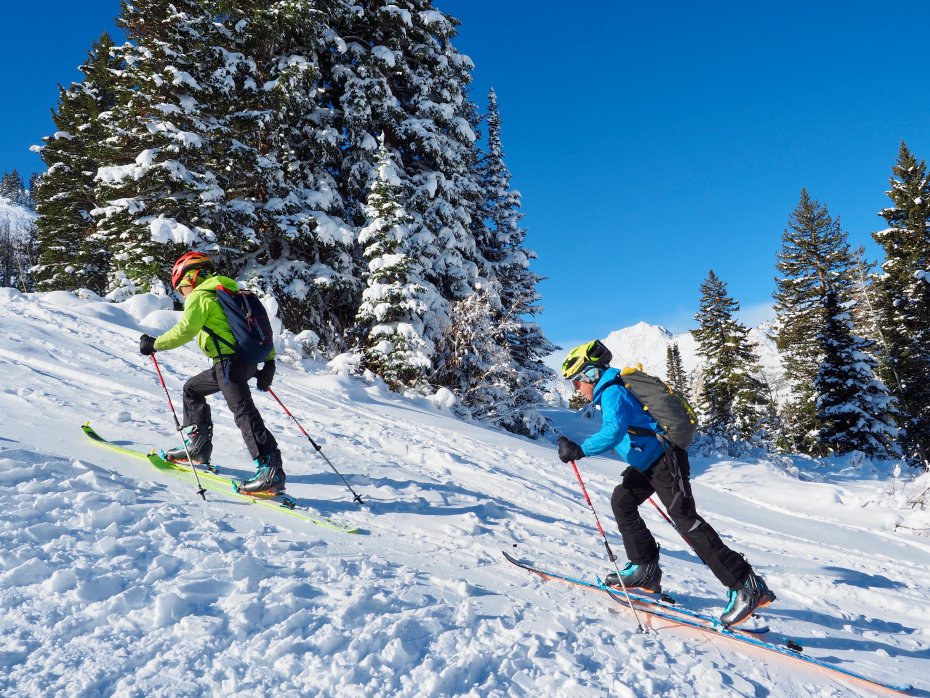
Junior Backcountry Skis
If you end up using the Contour kids adapter mentioned above, your choice of ski is already made as it will be the same ski your kids are using in the resort. Many parents choose to use alpine skis for their kids in the backcountry since they are widely available in many lengths. As with adults, it’s okay to go a little shorter on skis for backcountry use, which makes uphill travel easier. A good rule of thumb is chin-height for backcountry skis, measured with the tails on the ground up to your child’s chin.
If you’re looking for lighter weight specialty skis, several companies are now making backcountry skis targeting the junior market. The Dynafit Seven Summits Youngstar Ski Set is a case in point. These well-made junior designed skis come in a convenient package already mounted with the Rotation 7 and precut skins. Add tech boots and they’re ready to go right out the box!
Hagan has also made kids backcountry skis for years. Their latest edition is their lightest one yet, the Boost Junior, available in 125, 135, and 145-centimeter lengths. For bigger kids who can handle around a 150cm length, adult skis in shorter sizes become options. The Atomic Backland UL 85 Women’s ski comes in a 151 length. Similarly, the Ski Trab Gavia 85 is a very nice ski designed for lightweight skiers with great taste.
Kids Climbing Skins
Now that you have an idea of options for junior boots, bindings, and skis, it’s time to get the requisite skins that enable uphill travel (unless, of course, you went with the Dynafit Youngstar Ski Set that includes skins.)
If buying the Hagan Boost skis, look to the Hagan Hybrid Precut Skins for an exact fit. For alpine skis using the Contour Adapter - or any ski shorter than 140cm - your best bet is the Contour Kids Skin. Both skins are hybrid, use adult-approved materials, and are easy to peel apart.
Skis upwards of 145cm begin to have ample trim-to-fit and pre-cut options.
No matter the ski size, there always exists the option to build your own skins, with various materials available off the roll and priced per centimeter. There are plentiful options for tip and tail attachments available as well. Browse all the options here and here. If you’d like us to attach the tips and tails for you, add our skin services to your cart.
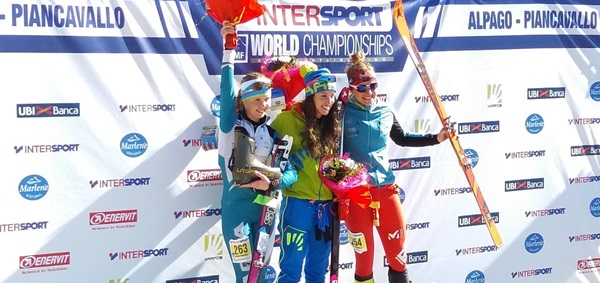
Junior Skimo Racing
In the Wasatch Mountains of Utah, there are multiple junior skimo racing teams that compete head-to-head in the Junior division of the Wasatch Powder Keg Race. This is great training for World level junior competition, which targets young adults aged 18-20. There is a friendly Cadet competition for kids under 18, but there are no official world cup races for that category. The next step above junior is the Espoir category for ages 21-23. At age 24, racers must enter the senior level competition against the world’s best. Racing-age is determined by age at the end of the calendar year after a particular ski season. For example, for the 2020/21 ski season, your age on December 31st, 2021 is what counts.
While there isn’t racing-specific gear for kids, some will use a women’s length race ski which is around 150cm in length. This is good practice as kids are moving towards formal competitions. Note many race skis are fairly stiff and unforgiving, which may cause trouble for lighter youth. A particularly friendly model in terms of flex and ease of steering is the Wasatch Speed Project from Voile, available in 150cm and 160cm. Please note that if you plan on racing internationally, boys still need to meet the 160cm minimum length requirement for races sanctioned by the ISMF.
Options for juniors are limited in the race-boot category. The smallest shell you’ll find is the Atomic Backland Ultimate, which starts at size 23.0 mondo (5 US men, 6 women). Dynafit makes size 22.5 in the PDG 2, but in reality that is just a size 23 shell as well. Most other brands start with a 23.5/24 shell in their race models. You should also note that for cadet and junior levels, competitors are not allowed to use stiff, full-carbon boots for their safety.
Since the junior bindings previously above are heavy for racing, competitive kids will start to eye the various race bindings. Please note that race bindings are typically not adjustable for release value and may not release properly for lighter weight youth. The softest race bindings are around 6 on the DIN scale, such as the Plum Race 99 and the Black Diamond Helio 145. You can also look at the Kreuzspitze RS lady, which is also in the same release value ballpark. However, the best options for growing juniors is often the Plum Oazo 4 or Dynafit Superlite 150 (fitted with optional 6 release spring). Both are nearly race-weight but can be adjusted in release value to accommodate growth.
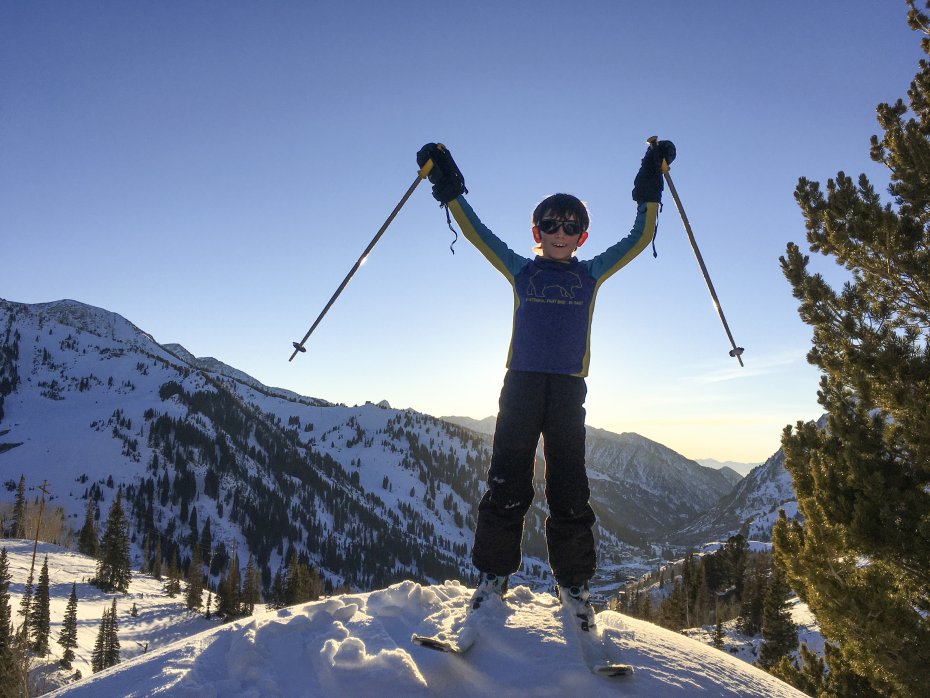
Now For the Fun Part!
No doubt backcountry skiing with your kids is exciting! Afterall, fun walks, scenic views, and great turns appeal to the young ones as well. However, before splurging on gear, we recommend that your kids first learn how to ski at a resort on groomed runs since skiing power and crusts in the backcountry can be difficult. However, when they are ready, skiing the first turns that were earned is a special experience!
This article was originally published on 11/17/2018 and was last updated on 1/21/2021.
Comments
I put the Hagan Core 8 on her resort skis from last year (139cm, 84mm), and so far so good.
She started the season with Proclines in 23.5, but is now on Backland Ultimate in 25.5 listed size, but with a thicker liner, those are really the 24.5 size of the other Backlands.
The Core 8 has been a great binding for her. From day one, with both boots, step in was easy for her (non U-spring heel!), and risers, brakes and toe lock are all easy and intuitive for her to use.
Both my daughters have Colltex Hybrid skins, which allows them to easily rip skins themselves. (Skis on).
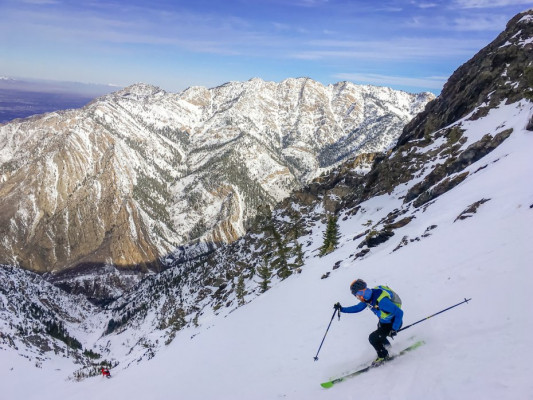
1/25/2021
Write Reviews, Earn Store Credit
